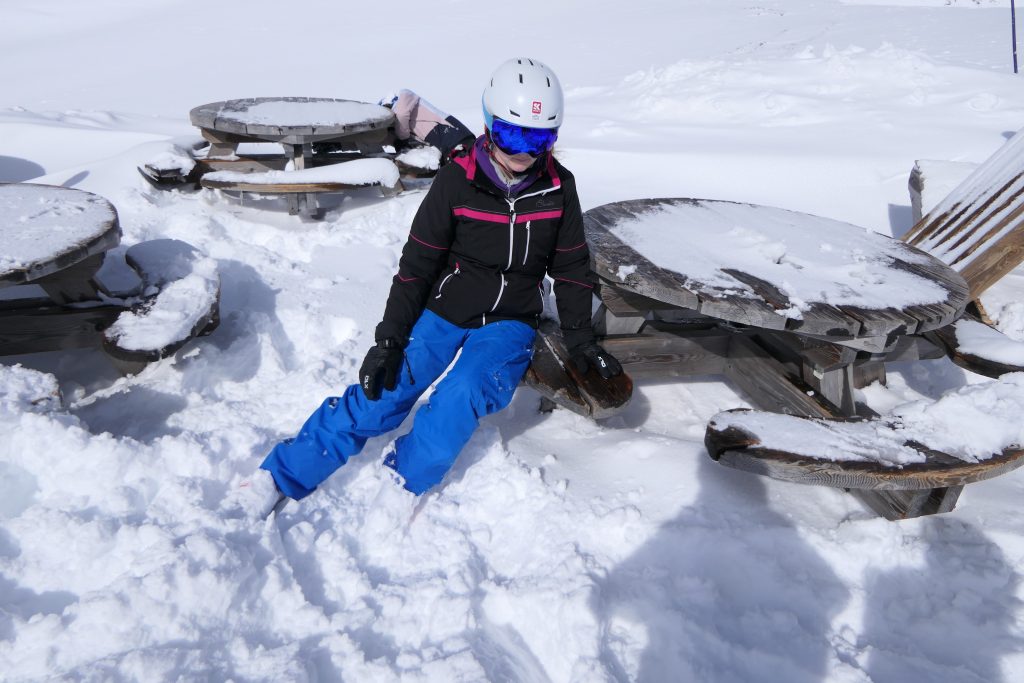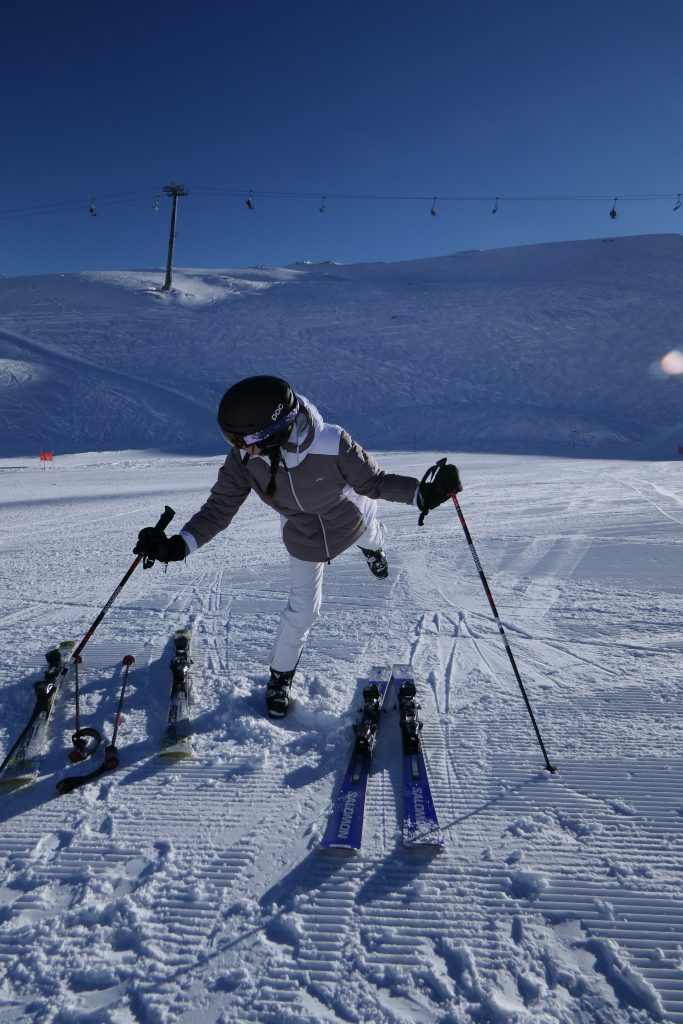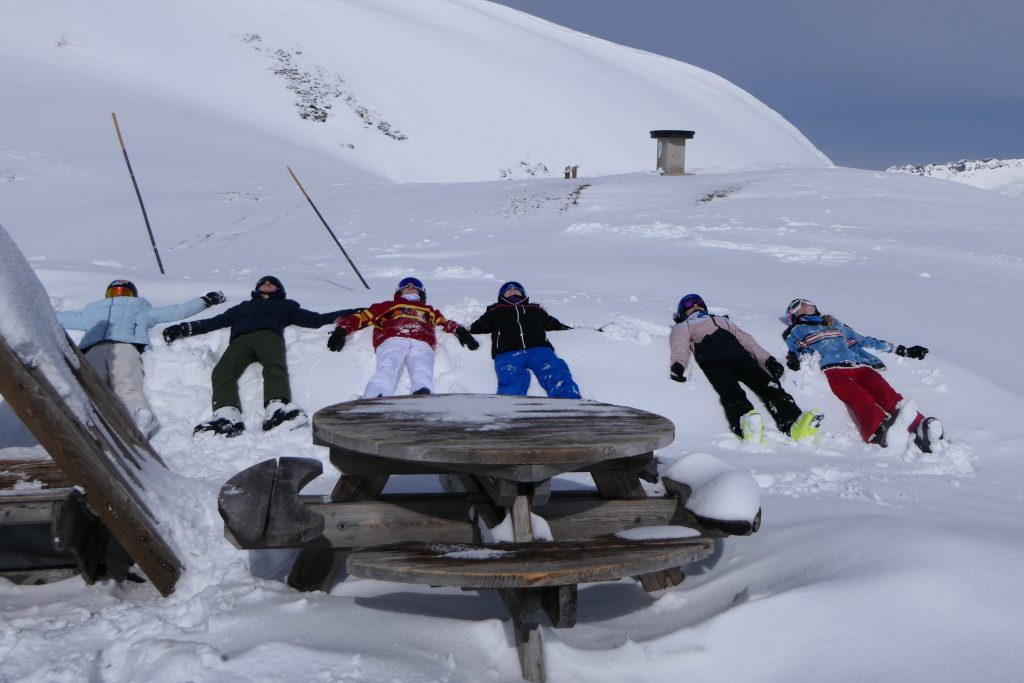- Pivot (Hip Angulation)
- Dynamics (Hip Angulation)
Pivot (Hip Angulation)
Today I had to explain how centrifugal force (being thrown out of a turn) is an illusion (and in mechanics it’s a fictitious force. If you have a ball on a string and you swing it in circles above your head the only force the string applies to the ball is to pull it inward, away from a straight line.
When pivoting you want your centre of mass (CoM) to move downhill (aided by a downhill pole planted for support) and for it (CoM) to pull the ski fronts “inward” (like pulling ball inward with the string) through the pivoted turn. Most people make the big mistake of pushing the skis outward to the side because they are unaware of the correct mechanics.
Using strong hip angulation allows the centre of mass to move into the turn with keeping the skis on the uphill edges long enough for them to pivot downhill into the fall line while staying on their uphill edges.
One practical aspect demonstrated was from a sideslip – blocking the tails of the skis with a downhill pole plant behind the feet and seeing the tips continue their lateral swing downhill into a turn.
The main advantage of this exercise at this stage is not just in building awareness of edge control and dynamics but in cultivating hip angulation and one of its primary roles.
Dynamics (Hip Angulation)
When extending the outside leg to drive the centre of mass into a turn it’s important to have flexibility at the hips to be able to alter the edge angle of the skis. This aspect of hip angulation is most easily understood by sitting on a bench with only one cheek of the bottom. The flexed “inside” knee has to be pulled toward the outside leg. Annabel shows a good example here.

The following is for general understanding…
Body Management (Hip Angulation)
Take a look at the two Olympic champion skiers in the photograph below.
Killy’s image from the 1960s has his chest facing downhill whereas Noel’s image from 2022 has his chest facing forward. What Killy is doing destroys your lower back and is probably why he never went on skis again after he stopped racing.

Protecting the Spine
- Hold the front of the pelvis up – aiming for “neutral pelvis”
- During the turn pull the outer hip backwards so that the ski doesn’t pull it in front of your ribs
- Look for a stretch between the ribs and hip joint
- Look for a reflex contraction of the lower abdominals – the postural reflex
- Keep the shoulders/chest following the skis (to some degree)
- Always “counter turn” the pelvis more than the chest/shoulders (It’s only the pelvis that should “face downhill”)
- Pulling the hip backwards also prevents both hip rotation and full upper body rotation
Source of Hip Angulation
The upper body needs to tilt forward over one hip joint – then rotate around it. This is in addition to pulling back the outside hip etc.
The body shape produced alters the location of the centre of mass enabling pressure on the ski fronts and also greater agility both into and out of turns – and pole planting if the skis are swinging laterally.
The hip angulation also provides flexion of the hip joint that gives absorption of shocks. Increased angulation also increases the edge angle of the skis to the snow and may alter the turn radius and grip.
Angulation when upright and pivoting has another function – when ANTICIPATING the next turn it is used to get the Centre of Mass out of the existing turn (by tilting the torso forward at the hip ) and letting the Centre of Mass move over the skis to plant the ski pole downhill for a strong, clear and definite support.

When the entire body inclines into the turn with hip angulation present this below is what it looks like.



